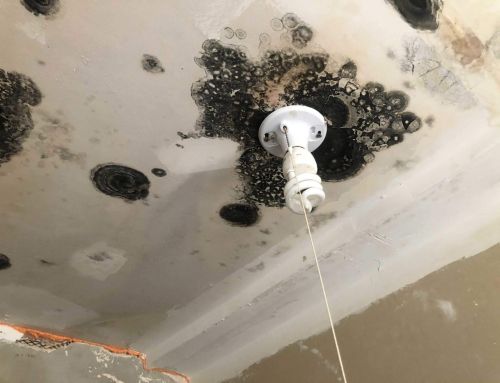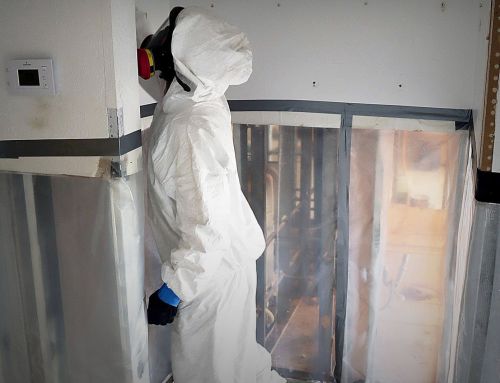Many people believe that mold only grows at certain times of the year, such as summer, and it is only a health and property risk during that time. The truth, however, is that mold grows throughout the year and can still cause serious problems when conditions are less than ideal.
Mold Thrives at 60-80 Degrees Fahrenheit
Mold can do well in both hot and cold temperatures. In fact, it is estimated that the temperature must be at least 140 degrees Fahrenheit before mold spores will actually die due to the heat. Likewise, extremely cold temperatures do not kill mold, and while mold will go dormant, that does not happen until the temperature drops below 32 degrees. Therefore, the ideal range for mold to grow is between 60 and 80 degrees. If moisture is present, mold can grow at an incredibly high rate in that temperature range. This is also the optimal temperature range for people, so even at times when the weather is not conducive to mold growth, mold is still present, and we may be creating ideal conditions for it within our homes.
Mold Needs Moisture to Thrive
While temperature is important to how fast mold will grow, the moisture determines whether it will grow at all. Without a constant source of moisture, mold will become inactive, which is why moisture control is such an integral component of mold control in the home. However, it’s important to note that a mold colony will not just die without moisture. The problem will not get worse, but it will still need to be removed. This is why it is imperative to do everything possible to avoid a mold problem in the first place.
Light and Dark
Another common misconception is that mold requires darkness to thrive. While mold does tend to do well in dark areas, this is not directly due to the dimness but due to the optimal temperature range, lack of ultraviolet radiation, and conduciveness for higher moisture levels. It is true that mold tends not to do well in well-lit areas outdoors, but it will do just fine in most well-lit areas within your home.
Preventing Mold in Summer
Despite common misconceptions to the contrary, summer is not the peak season for mold, and external mold spores are often at their lowest counts of the year. The main issue to be concerned with is high humidity. Humidity is high in the summer months, and many people only use air conditioning. While air conditioners do remove some moisture, they often do not remove enough to avoid excessive moisture. There are a number of reasons to consider a whole-dehumidification system, and mold prevention is certainly one of them.
Mold Growth in Gutters and On the Roof
Even in the blistering summer heat, gutters and even your roof can create a perfect environment for mold. Clogged gutters, for instance, can lead to thousands of mold spores due to the shade provided by the debris and the ample water source. These mold spores become airborne and can enter your home through open windows but also be pulled into your HVAC system via the mechanical ventilation system. This is a scenario where summer can actually be the worse time of year for indoor mold.
Preventing Mold in Spring and Autumn
Spring and autumn should not be underestimated when it comes to mold. Both seasons usually have a temperature range that is conducive to mold. As many with allergies can attest, factors in spring are often just right to cause mold spore counts to spike very high. Counts can also spike in autumn due to the moisture and the abundance of decaying leaves that foster a good mold environment. Preventing mold during these periods is still all about moisture control. Don’t be afraid to open the windows during nice weather as it can actually help to reduce moisture levels in your home.
Ventilation Issues and Moisture Buildup
Inadequate mechanical ventilation has become a more pressing problem over the last couple of decades. Modern home construction allows for homes that are tightly sealed and thus very energy efficient. Nevertheless, this requires a strong mechanical ventilation system. Without that, the home is prone to mold problems and other indoor air quality issues because concentration levels are higher.
Natural Ventilation and Heavy Rains
Some people enjoy opening their windows on a cool and rainy day, but this can often be a bad decision from the perspective of mold control. The mold spore count is likely high and moisture is prevalent.
Extreme Cold Doesn’t Kill Mold
Many people think that winter is not conducive to mold, but as mentioned, mold can thrive and does not go dormant until below 32 degrees. In fact, winter often presents perfect conditions — temperature and moisture — and this is born out in the fact the mold spore counts are often highest in December and January. A factor perhaps in your favor is that the air is dry, and your home tends to be dry, but it’s important to be vigilant during this period since mold can definitely get a foothold.
Mold Growth on Windows in Winter
One of the more common mold problems people encounter in winter is mold on their windows and windowsills. This can happen in autumn as well and occurs because precipitation accumulates on these surfaces and provides an ideal place for mold to grow. Heating your home can lead to condensation on the interior side of the window, so you can actually have the mold in the home. Clean these areas whenever you see them using your household cleaner of choice, and if the moisture buildup is consistent or significant, you should schedule a professional to assess the situation.
Preventing Mold in Winter
Moisture is certainly the main concern in winter and autumn. Any degree of moisture penetration should be dealt with as soon as possible to avoid a mold problem. Be mindful that some mold in the home may be unavoidable. However, if you limit moisture in the home, then you substantially lower the chance for an established presence of mold. Many people now use humidifiers in the home during winter. If you do, which is a good idea for a variety of reasons, it’s very important to ensure that you do not set the humidity too high, which can lead to mold in the ductwork and eventually throughout the home. In addition, you may want to consider air purification, which can eliminate mold spores from the air.
Mold Allergies in Winter
While we often associate spring with allergies, winter is often a bad period for allergy suffers as well. While the spore counts are fewer, the concentration of mold is higher. Therefore, whole-home air filtration or air purification along with adequate ventilation is the best way to avoid these triggers.
Your Local Mold Remediation Pros
Pur360 has specialized in mold testing and eradication for more than 15 years. Our original location is in Chicago, but we now have offices in Atlanta, Dallas, Houston, Madison, Milwaukee, Orlando, and Tampa. Our team performs on-site mold inspections for both residential and commercial locations. If you have a problem, we offer a full range of mold eradication services. This includes our patented ultraviolet sanitization methods but also ancillary services, such as dehumidification, odor removal, stain removal, carpet removal and disposal, drywall removal and repair, and painting. Call us today to learn more about our services or to schedule a free on-site consultation.



